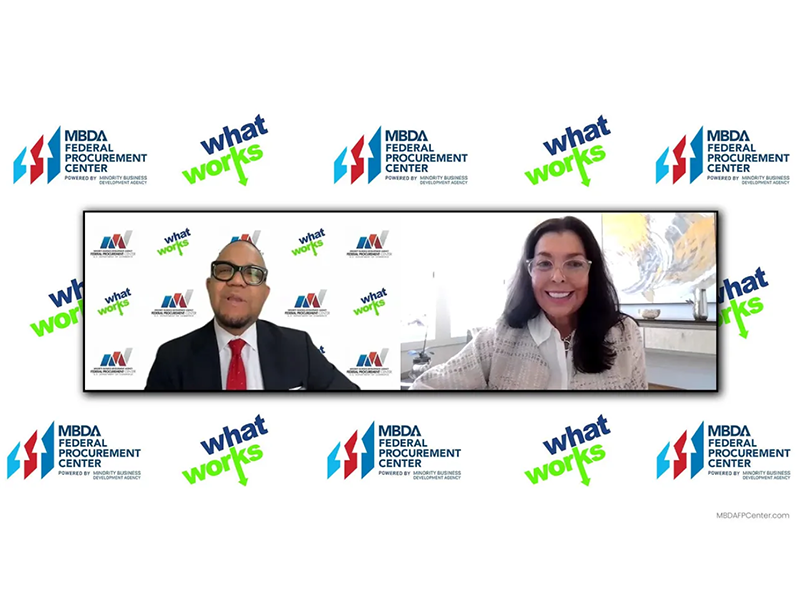Government Strategies for Thriving HUBZone Communities – What Works - A Total Team Approach.
The Historically Underutilized Business Zone (HUBZone) program, administered by the Small Business Administration (SBA) in the United States, is designed to promote economic development in distressed areas by providing federal contracting preferences to businesses located in HUBZone. These preferences are aimed at stimulating job growth and business development in underserved communities. To achieve the objectives of the HUBZone program, government agencies must actively engage in strategies that support the growth of HUBZone businesses and ensure they meet their HUBZone goals.
 “The HUBZone program, often misunderstood and needlessly complicated, was designed to empower small businesses to revive struggling communities. Our goal is simple: when these businesses thrive, so do the communities they serve, through increased capital investment and job creation. Despite past challenges, we are determined to make a difference. The HUBZone Council and MBDA Federal Procurement Center are committed to uplifting and diversifying the HUBZone portfolio, not merely to meet a goal, but to help these businesses flourish, knowing that in their success lies the transformation of our most deserving communities."
“The HUBZone program, often misunderstood and needlessly complicated, was designed to empower small businesses to revive struggling communities. Our goal is simple: when these businesses thrive, so do the communities they serve, through increased capital investment and job creation. Despite past challenges, we are determined to make a difference. The HUBZone Council and MBDA Federal Procurement Center are committed to uplifting and diversifying the HUBZone portfolio, not merely to meet a goal, but to help these businesses flourish, knowing that in their success lies the transformation of our most deserving communities."
- Michelle Burnett, Executive Director
I. Understanding HUBZone Goals
Before delving into the strategies, it's crucial to have a clear understanding of what HUBZone goals entail.
A. Definition and Objectives of HUBZone Goals
HUBZone goals represent the targets set by government agencies to award a certain percentage of their contracts to businesses located in HUBZone communities. These goals are typically defined annually and are a key component of the government's commitment to economic development in underserved areas.
B. Key Performance Indicators (KPIs)
Government agencies track their progress in meeting HUBZone goals through specific KPIs, such as the percentage of contracts awarded to HUBZone businesses and the total contract dollars obligated to them.
C. Historical Context of HUBZone Program
The HUBZone program was established in 1997 as part of the Small Business Reauthorization Act to stimulate economic development and create jobs in economically distressed areas. Over the years, the program has evolved, and understanding its history is vital to comprehending its current goals and purpose.
II. Challenges in Meeting HUBZone Goals
Meeting HUBZone goals is not without its challenges. Recognizing and addressing these obstacles is essential for government agencies seeking to achieve success.
A. Identifying Common Obstacles and Roadblocks
- Limited Awareness: Many businesses and government agencies may not be fully aware of the HUBZone program and its benefits, which can hinder participation.
- Complex Certification Process: The HUBZone certification process can be complex and time-consuming for businesses, deterring potential participants.
- Contracting Barriers: HUBZone businesses may face challenges in competing for federal contracts, including stiff competition from non-HUBZone firms and resource limitations.
B. Factors Affecting the Success of HUBZone Businesses
- Access to Capital: Many HUBZone businesses struggle to secure the necessary capital to bid on and fulfill government contracts.
- Capacity Building: Some HUBZone firms may lack the necessary infrastructure and expertise to handle larger contracts effectively.
- Market Access: The geographic location of HUBZone businesses can limit their access to a broader market, potentially constraining growth opportunities.
C. Government's Role in Addressing Challenges
Government agencies play a crucial role in addressing these challenges and creating an environment conducive to HUBZone business success.
III. MBDA FPC and National Contractors HUBZone Council Plan Strategies to help Government Agencies Meet HUBZone Goals
To meet HUBZone goals effectively, government agencies can implement a range of strategies that foster growth and development among HUBZone businesses.
A. Collaboration with Small Business Administration (SBA)
- Leveraging SBA Resources and Expertise: Government agencies can collaborate with the SBA to tap into its resources and expertise in supporting small businesses. This partnership can provide valuable guidance and assistance in achieving HUBZone goals.
- Strengthening Partnerships for Better Outcomes: Government agencies can work closely with the SBA to establish partnerships with HUBZone businesses and industry associations. These partnerships can create opportunities for mentorship and capacity-building, ultimately strengthening the HUBZone business community.
- Leveraging MBDA Centers located in HUBZones:
B. Outreach and Education
- Raising Awareness About the HUBZone Program: Government agencies can actively promote the HUBZone program through outreach campaigns, workshops, and webinars. This can help raise awareness among potential HUBZone businesses and encourage their participation.
- Providing Training and Assistance: Offering training and assistance programs to HUBZone businesses on topics such as contract bidding, compliance, and financial management can enhance their competitiveness and increase their chances of winning government contracts.
C. Incentives and Support
- Financial Incentives for HUBZone Businesses: Government agencies can explore options for providing financial incentives to HUBZone businesses, such as grants, low-interest loans, or tax incentives, to facilitate growth and expansion.
- Procurement Preference Programs: Expanding and enhancing procurement preference programs that prioritize HUBZone businesses in the contract award process can significantly contribute to meeting HUBZone goals. (The new strategic partnership between the National HUBZone Contractor’s Council and the MBDA Federal Procurement Center will work collaboratively to address this Government Agency wide pain point
- Access to Capital and Financing Options: Facilitating access to capital by partnering with financial institutions or developing loan programs tailored to HUBZone businesses can address the capital challenges they often face.
D. Streamlining Certification and Compliance
- Simplifying the HUBZone Certification Process: Simplifying and expediting the HUBZone certification process can reduce administrative burdens on businesses, making it more attractive for them to participate in the program.
- Enhancing Compliance Monitoring and Reporting: Strengthening compliance monitoring and reporting mechanisms can ensure that HUBZone businesses continue to meet program requirements, fostering accountability and integrity.
E. Data-Driven Decision Making
- Utilizing Data Analytics for Targeting Opportunities: Government agencies can employ data analytics to identify procurement opportunities that align with HUBZone goals, allowing for more targeted and strategic contracting.
- Regularly Assessing Progress and Making Data-Driven Adjustments: Continuous monitoring and assessment of progress toward HUBZone goals, based on data-driven insights, enable government agencies to adapt their strategies as needed for optimal results.
F. Engaging in Public-Private Partnerships
- Collaborating with Private Sector Organizations: Encouraging partnerships between HUBZone businesses and private sector organizations can open doors to new markets, mentorship, and access to resources.
- Encouraging Large Corporations to Partner with HUBZone Businesses: Government agencies can encourage large corporations to partner with HUBZone businesses as subcontractors or suppliers, promoting economic development in HUBZone communities.
IV. Success Stories and Case Studies
To inspire and illustrate the effectiveness of these strategies, government agencies can share success stories and case studies showcasing instances where HUBZone goals were met or exceeded. These stories can highlight the tangible benefits of the program for both government agencies and HUBZone businesses.
V. Monitoring and Evaluation
Implementing the strategies outlined above is only part of the equation. Government agencies must establish robust monitoring and evaluation systems to track progress and make informed decisions. Regular evaluations can help agencies refine their approaches and ensure they remain aligned with HUBZone goals.
A. Establishing a System for Ongoing Evaluation
- Data Collection: Collect relevant data on contract awards, compliance, and HUBZone business growth.
- Performance Metrics: Define key performance metrics to assess progress toward meeting HUBZone goals.
B. Adjusting Strategies Based on Outcomes and Feedback
- Continuous Improvement: Use the data and feedback collected to make necessary adjustments to strategies, ensuring they remain effective.
- Flexibility: Be flexible in responding to changing economic conditions, emerging opportunities, and evolving challenges.
VI. Conclusion
At the MBDA Federal Procurement Center, we are dedicated to helping government agencies navigate the HUBZone program effectively. By joining hands with us, you can not only meet your statutory requirements but also drive economic development in historically disadvantaged areas. Let's work together to achieve your procurement goals while empowering HUBZone businesses to thrive. Learn more about our resources and expertise at the MBDA Federal Procurement Center today and be a catalyst for positive change.








